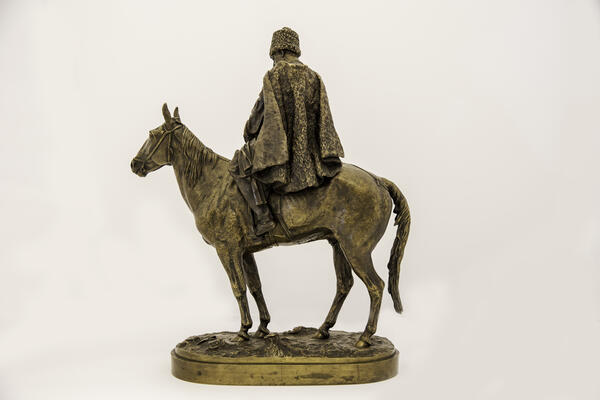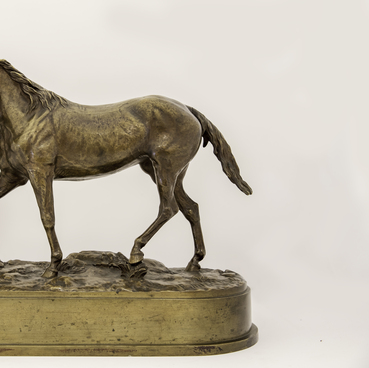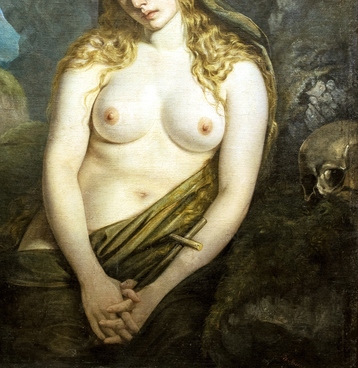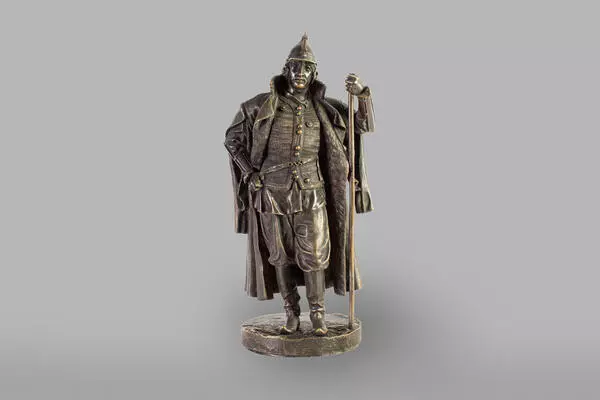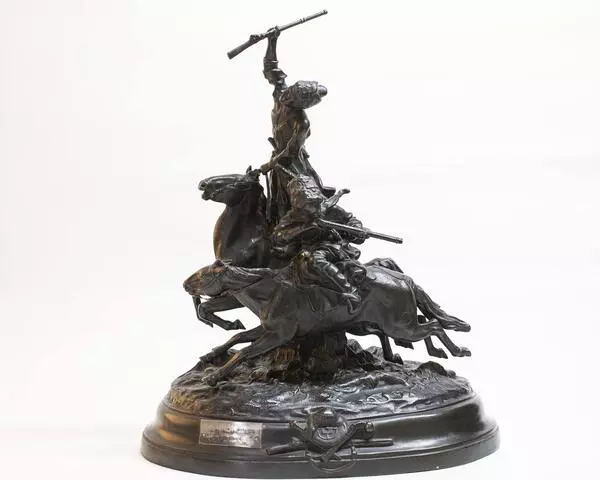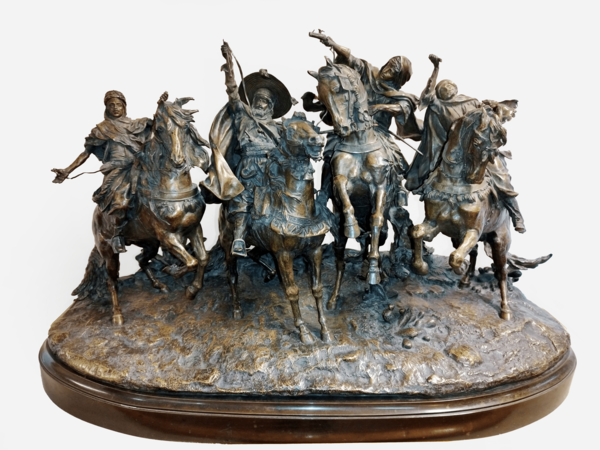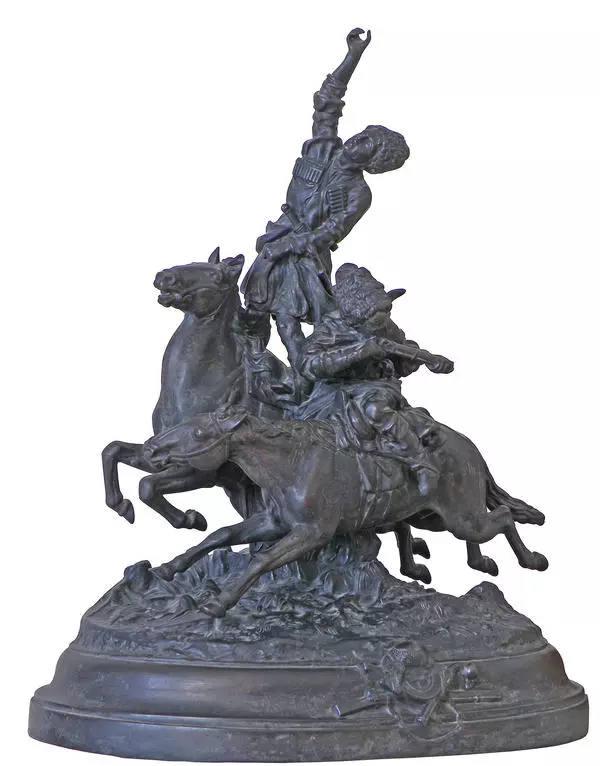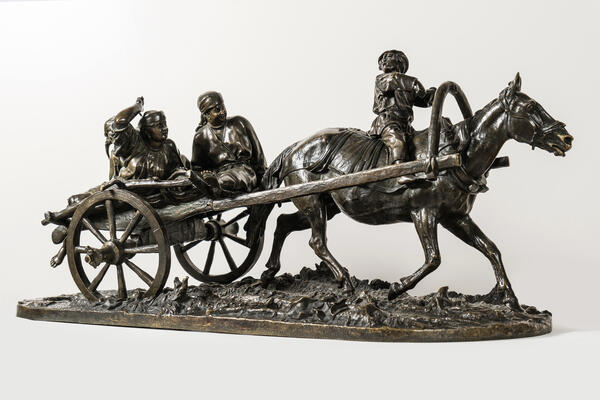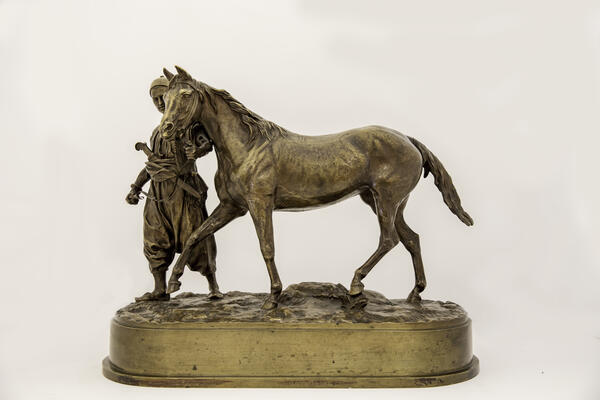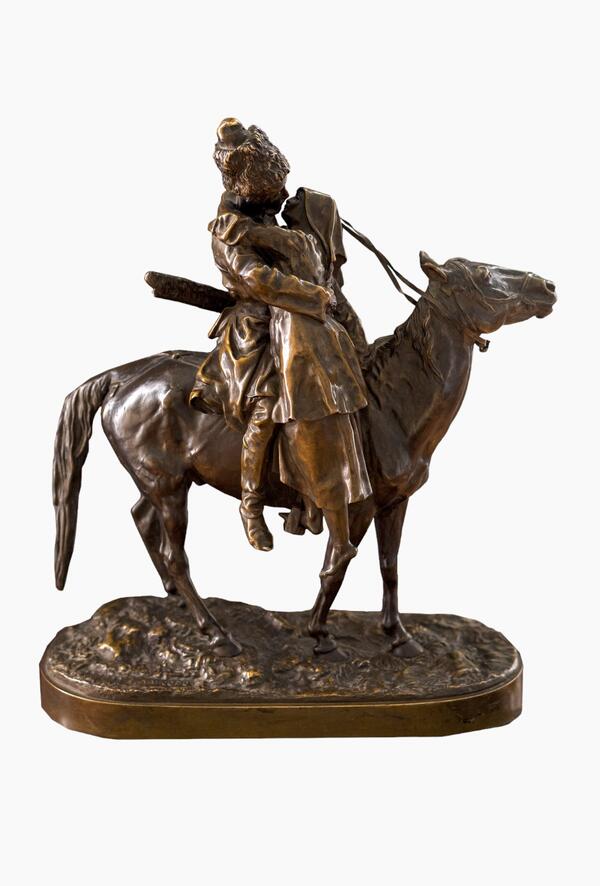Yevgeny Alexandrovich Lanceray was a Russian sculptor. He studied law at Saint Petersburg University. He received no comprehensive art education. He attended the workshop of Nikolay Ivanovich Liberich; in 1867, he went to Paris to study artistic casting. In 1869, he displayed his works at the exhibition of the Imperial Academy of Arts and earned the title of a 2nd-degree classed artist; in 1872, he became a 1st-degree classed artist, and in 1874 — a free honorary member of the Imperial Academy of Arts.
While traveling, Yevgeny Lanceray studied the works of famous French, Belgian and Russian sculptors, visited museums and galleries and explored the world around him a lot. Traveling through Kyrgyzstan, Bashkiria and the Caucasus, the sculptor showed a lot of interest in the life of the local people and the local breeds of horses.
Lanceray’s contemporaries recalled that he was an excellent horseman, who was sometimes even compared to a centaur — such was the connection between him and horses. When working on a new composition, the sculptor did not embody the image of some “average” horse. Instead, he detailed the animal itself, as well as selected the breed that matched the rider. Thus, he had a sheikh riding an Arabian horse, an Englishwoman riding a hunter (a half-bred English horse), and a dashing steppe horse for a Cossack.
Initially, Lanceray took commissions, so each product existed in a single copy only. But the sculptor’s works were so good that multiple large Russian foundries acquired the rights to use molds modeled after his sculptures, including the foundry of Felix Chopin.
The sculptural composition “Circassian on Horseback” depicts a Circassian herdsman on horseback in traditional clothes — a Circassian coat with a row of cartridge pockets on the chest, a burka coat on top of it, a papakha hat and soft shoes. The rider holds a lasso with a noose for catching horses.
The sculptor’s exceptional observation skills allowed him to accurately convey the peculiarities of national clothes, the dynamics, the type of character and their personality.
The work belongs to the later, more mature period in the sculptor’s career.

